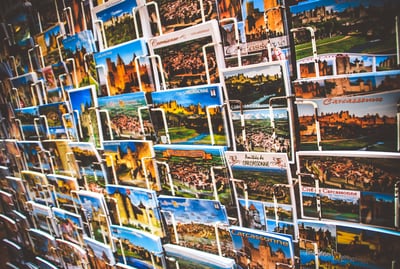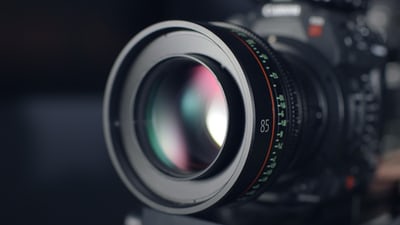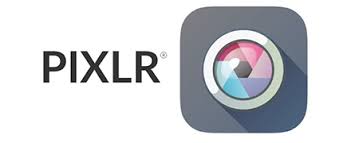

Have the following questions ever found you scratching your head?
Q1) Why is that on a google image search, my products never show up?
Q2) Are Meta, alt attributes required to be added to images?
Q3) JPEG, GIF and PNG which to use? When to use?
If either of these questions or any other image related questions ever found you in a similar situation, Cheers up! The article includes the answer to all your queries.
Descriptive naming of images
When taking into consideration image SEO, it is very important to use relevant keywords to help your image rank on search engines. Coming up with a keyword rich and descriptive file name is very crucial for image optimization.
Take for this image as an example:
One can use the generic name given by camera for the image (e.g. DCMI-02.jpg).However, naming the file like Black-Audi-R8.jpg would be much better and would also make it easily stand out for its name. Thus, with keywords like black, Audi or car up for search the chances of your image being shown become really HIGH!
Include appropriate alt tags
Search engines like Google, Bing, Yahoo, etc. all have AI controlled ranking systems. There is no human brain behind the selection or ranking of images. Thus, they rely a lot on the alt tags to determine what is being depicted in the image.
When writing alt tags, aim at accurately describing your image through few but relevant keywords. In addition to SEO purpose, al text also makes your image accessible to users who’ve disabled images in their browsers or have visual disabilities. And considering that, great user experience is the key to having a popular site, that’s never a bad idea. For example:
Use,(for the below image)
<img src=”camera.jpg” alt= “zoomed black dslr camera”> as an alt tag would lead the viewer of the main crux of the image.
Also, keep it in mind not to make your alt tags long let them be short and to the point.
Minimize the image size
One among the various factors for search engine rankings is the page loading time. The larger the image, the more time the page takes to load. Thus, try having a fixed dimension for your images. Even if the image is of extremely high quality, try optimizing or reduce the image size. Any image larger than a few kilobytes is going to hurt the speed.
High resolution images work well for print reproduction, however for using it online you need to scale down the image without losing too much of the quality so that it works well on the web.
Use image optimization tools
For minimizing the images, cropping, reducing the revolution never miss the shortcuts. They help save time and also help you in maintaining quality of the image and also make it less in size. Some of the image optimization tools include:
- Pixlr
- Gimp
- JPEG mini
- Affinity Photo
- File Optimizer
- Paint.net, etc
Use Relevant Images
Choose or create images that complement the overall theme of the pages. It might be an infographic, a flow chart, diagram, an appropriate photograph, etc.
Always keep in mind that Google would consider your image only if it is relevant with the content of the website and if it meets or attracts the eyes of the viewers.
Selecting the right Image Format
PNG,JPEG, and GIF are all popular. Each carries with them their own benefits. However, their usage is selective. Mostly, JPEG format of file is used for images including more colours. PNG for similar images. Thus, the image format would play a significant role in increasing the ranking of your image. Use the below given table for your convenience.
Use of unique images
Using stock images is fine, but they wouldn’t necessarily help in increasing the ranking of your images. Driving homogeneity from the content writing space, coming up with new unique articles would help enhance the SEO, on a similar note it is a good idea to come up with unique images whenever possible.
Use Site maps
According to Google, a site map is: file where one can list the webpages of your site, to help bring into notice of the search engines.
Site maps play an important part of SEO because they tell Google about all the pages of your site .Thus, including infographics, images, photos on these, would help bring the image to notice.
Create High-quality, Original Content
A search engine always tends to reward the high-quality pages. This applies to the information of the website where your image is uploaded and to the image itself. Google always encourages original content over copied or previously used.
So, whenever possible take your own photos and graphics. The novelty of your content is always rewarding.
Linking and Back-linking
A reasonable internal thinking always has a positive influence on the SEO of one’s website. For images you can do it indirectly by using thumbnails. Also, the repeated use of an image on a website helps in improving the ranking of the image.
Backlines in a similar way turn out to have a positive effect on the ranking of the image. As more popular the site, the more popular the image turns out.
Sharing your photos
For pages full of chunks of written content on them, turn out to be very boring for the viewers. This is where the usage of images on newsletters, blog sites, articles comes in handy. They help adding Colour to the content and make it interesting for the viewers. Having your images on high audiences or popular sites would help increase its ranking.
Thus, always keep sharing your images on social media sites and keep applying to sites which are more towards content writing or information to remain in the eyes of Google.
Post Frequently
Maintaining a frequent upload schedule for your images would help maintain the freshness of your content on your website(image-heavy websites too).Regularly updating your images or posts will help keep your visitors stay connected with you and also encourage them to come back for more. And when visitors are frequent Google has to show you on its first page.
That’s the end of this article, apply these tips to your images and don’t forget to share yours experiences with us.


